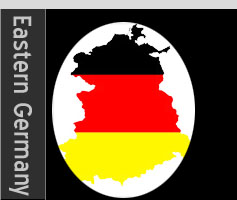The revival of a watch-making tradition in eastern Germany
 Berlin - Twenty years ago Glashuette, nestling in Germany's enchanting Mueglitz Valley, midway between Dresden and the Czech border, was in the doldrums. Its once famous watch-making industry had hit bad times. Of its original 2,200 workforce only 100 employees were left.
Berlin - Twenty years ago Glashuette, nestling in Germany's enchanting Mueglitz Valley, midway between Dresden and the Czech border, was in the doldrums. Its once famous watch-making industry had hit bad times. Of its original 2,200 workforce only 100 employees were left.
Then the Berlin Wall fell on November 9, 1989, followed a year later by the disintegration of the communist East German state. That led Walter Lange, who had been forced to leave communist East Germany in 1948, to return to Glashuette on December 7, 1990.
The date was symbolic, being the same day on which 145 years earlier his great-grandfather, Ferdinand Adolph Lange, had founded the original Lange watch-making company in the town.
After World War II, and Germany's division, the town's famous watch-making industry in Glashuette was nationalized by the East German regime under the title Glashuette Uhrenbetriebe (GUB).
Under the communists, the state-run company made watches of solid and simple design for its citizens and for people living in neighbouring Eastern European countries, less so in the Soviet Union where the Russians had their own watch-making concerns.
Those watches that were exported to West Germany and the so-called "capitalist" countries were stamped "Made in Germany" on the back - apparently to disguise from possible buyers that they were of East German origin and so possibly of inferior design.
Glashuette's watch-making tradition continued, albeit within the tightly controlled GUB collective for 40 years. Then in 1989-90 it suffered a dramatic slump in sales during the break-up of the socialist empire.
Erich von Polheim, an Essen-based collector of clocks and watches, says he never thought Glashuette would recover from the impact of the communist collapse. "But it has done so, quite remarkably in the past 20 years, thanks to the entrepreneurial spirit of people like Walter Lange."
A. Lange & Soehne are renowned today for producing some of the finest and most exclusive watches in the world, with prices ranging from 12,900 euros (19,260 dollars) to almost 400,000 euros (597,334 dollars) for top models.
Journalist Hannes Koch in an article in the German Times wrote recently that Glashuette watch-cases contain a tourbillon - "an ingenious mechanism which compensates for inaccuracies caused by gravity."
"The mechanism served a practical purpose in earlier times due to gravity always dragging the mechanism downward in pocket-watches, which hung vertically when worn. In modern wristwatches, however, the tourbillon is virtually useless, since gravity works on them from all sorts of directions. But art for art's sake makes all the difference," he argues, "which is why people buy Lange's large, heavy watches."
Fabian Krone, 46, the CEO of A. Lange & Soehne, who previously worked for Alfa Romeo in Turin, claims Lange is not out to make heirlooms. "Someone who wears a Lange watch is a leader but does not need to prove that."
"Our clients love understatement," he once said. Lange & Soehne, which employs close on 500 workers producing thousands of high quality watches every year, is today part of the Swiss luxury goods concern Richemont.
Besides Lange & Soehne, companies with names like Nomos, Glashuette Original, Wempe and Tutima operate in the idyllic watch-making town.
The GUB, which became the Glashuette Uhrenbetrieb GmbH, is today part of the Swatch Group. Under the name "Glashuetter Original," it markets its top-end watches, including the much prized "Senator" line, throughout the world.
Another company, Nomos, was founded in the early 1990s when its founder, Roland Schwerter, travelled from Duesseldorf to visit relatives in Saxony and was captivated by Glashuette's watch-making traditions.
He converted a disused train station into a watch-making site, furnishing it with a bevy of computer-controlled machines. "A good, solid mechanical watch that was beautiful but without frills - that was what l wanted to bring onto the market," he would say later.
Presently, the flagship of the Nomos product line is the Tangente, a watch with a flat, round case of stainless steel and an easy-to-read face. "Its timeless design is based on the Bauhaus principle of 'form follows function'," notes Erich von Polheim.
Nomos watches cost between 900 and 1,900 euros, depending on their type, automatic or manual winding mechanisms, and additional features.
Former US president Bill Clinton, German Foreign Minister Frank-Walter Steinmeier, former German chancellor Gerhard Schroeder and actor Roger Moore are all said to be the proud possessors of Nomos watches. (dpa)